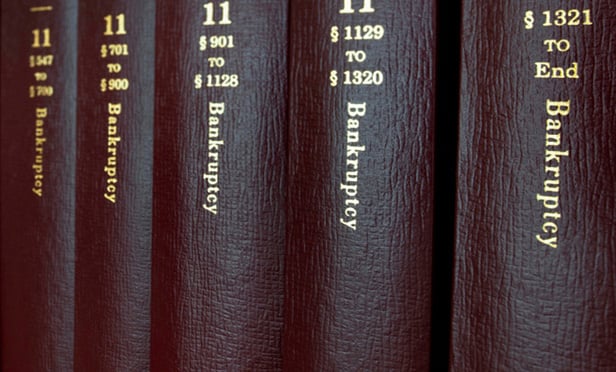Features

Common-Area Risk Abatement: Who is Responsible?
When customers, employees and others invited to or simply passing by a leased commercial property are injured, and want compensation, who will be on the hook for the costs of bodily injury and property damage — the landlord, the tenant, the maintenance and security contractor hired by them, or some combination of these?
Features

The Bankruptcy Code's Inherent Limitations for Struggling Golf Courses
<b><i>Part Two of a Two-Part Article</b></i><p>As addressed in the first part of this article last month, addressing the problems confronting golf course owners seeking financial restructuring under Chapter 11, the ability of a debtor to reject a restrictive covenant under Section 365 or to sell free and clear of a covenant under Section 363(f) is limited and the obstacles are difficult to surmount.
Features

Commercial Rent Control in New York: Back Again?
As retail vacancies have multiplied in New York City in recent years, some in the City Council have advocated for the reconsideration of commercial rent control, as set out in a proposed piece of legislation, the Small Business Jobs Survival Act This article provides a brief, nontechnical review of the bill and the legal and practical hurdles it faces if enacted.
Features

What to Consider When Drafting Renewal and/or Expansion Terms in Arbitration Clauses
Navigating through a murky arbitration clause is no easy feat. Assuming familiarity with the basics, the following is a list of considerations that should prove valuable whether representing the tenant or the landlord.
Features

The Bankruptcy Code's Inherent Limitations for Struggling Golf Courses
<b><i>Part One of a Two-Part Article</b></i><p>This article describes conflicts with zoning boards and neighbors as it relates to distressed golf course properties and the methods sometimes available in the bankruptcy realm for working around the problem of restrictive covenants that run with the land.
Columns & Departments

Case Notes
Without Contractual Consent to Inspection, Lack of Protest Doesn't Excuse Landlord's Trespass<br>Resulting Trust Found Where Commercial Property Held in Just One Partner's Name
Features

A Little Knowledge Goes a Long Way: A High-Level Overview of Liability Insurance Provisions in a Retail Lease Agreement
Despite their seemingly lackluster nature, well-drafted insurance provisions in a contract between a landlord and tenant can be extremely important when it comes to mitigating potential exposure and protecting a shopping center's assets.
Features

Fifth Circuit Holds Asset Purchaser Unable to Acquire Rejected License Agreement
A license agreement "deemed rejected by operation of law" could not be acquired under a court-approved asset purchase agreement, held the U.S. Court of Appeals for the Fifth Circuit
Features

Due Diligence in Distressed Community Hospitals
Many community hospitals are in distress. The causes are varied but have a constant theme — the cost to adapt to a rapidly changing environment.
Features

Secured Creditors Beware of Your Descriptions, Nomenclature and Terminations
Secured creditors can learn a great deal from a few recent bankruptcy cases involving the Uniform Commercial Code that remind us that the “devil is in the details.” These cases show that it is unrealistic to expect forgiveness by a court after a misstep involving Article 9 of the UCC.
Need Help?
- Prefer an IP authenticated environment? Request a transition or call 800-756-8993.
- Need other assistance? email Customer Service or call 1-877-256-2472.
MOST POPULAR STORIES
- The DOJ's Corporate Enforcement Policy: One Year LaterThe DOJ's Criminal Division issued three declinations since the issuance of the revised CEP a year ago. Review of these cases gives insight into DOJ's implementation of the new policy in practice.Read More ›
- Use of Deferred Prosecution Agreements In White Collar InvestigationsThis article discusses the practical and policy reasons for the use of DPAs and NPAs in white-collar criminal investigations, and considers the NDAA's new reporting provision and its relationship with other efforts to enhance transparency in DOJ decision-making.Read More ›
- The Roadmap of Litigation AnalyticsLitigation analytics can be considered a roadmap of sorts — an important guide to ensure the legal professional arrives at the correct litigation strategy or business plan. However, like roadmaps, litigation analytics will only be useful if it's based on data that is complete and accurate.Read More ›
- The DOJ's New Parameters for Evaluating Corporate Compliance ProgramsThe parameters set forth in the DOJ's memorandum have implications not only for the government's evaluation of compliance programs in the context of criminal charging decisions, but also for how defense counsel structure their conference-room advocacy seeking declinations or lesser sanctions in both criminal and civil investigations.Read More ›
- Understanding the Potential Pitfalls Arising From Participation in Standards BodiesChances are that if your company is involved in research and development of new technology there is a standards setting organization exploring the potential standardization of such technology. While there are clear benefits to participation in standards organizations — keeping abreast of industry developments, targeting product development toward standard compliant products, steering research and intellectual property protection into potential areas of future standardization — such participation does not come without certain risks. Whether you are in-house counsel or outside counsel, you may be called upon to advise participants in standard-setting bodies about intellectual property issues or to participate yourself. You may also be asked to review patent policy of the standard-setting body that sets forth the disclosure and notification requirements with respect to patents for that organization. Here are some potential patent pitfalls that can catch the unwary off-guard.Read More ›
